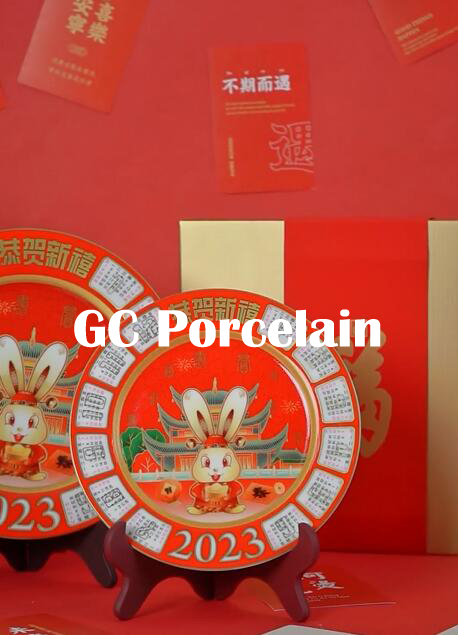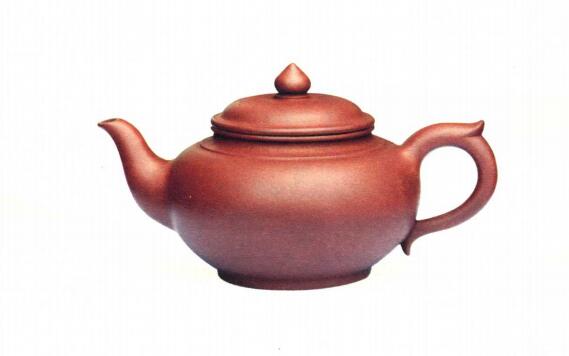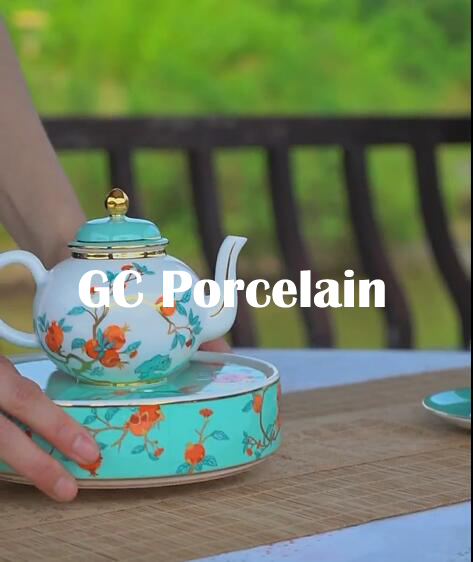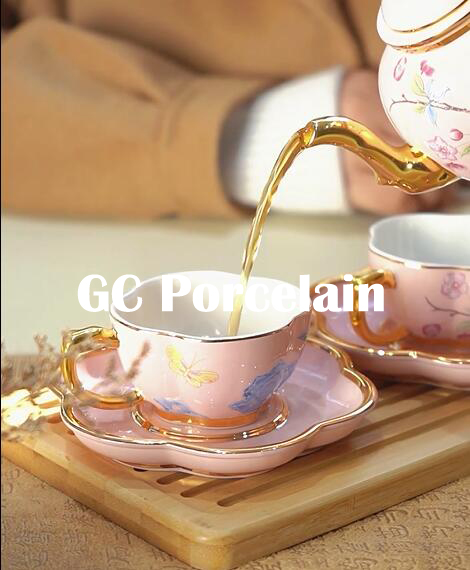Clay Teaware
Suitable for brewing: Green tea, black tea, oolong tea, dark tea, floral tea
The clay teaware referred to here mainly includes Yixing-made Zisha clay teaware. Yixing, historically known as Jingxi and Yangxian, is located in Jiangsu Province, China, by the shore of Taihu Lake. As early as the Neolithic period, primitive pottery was already being fired here, hence the place was later known as the "Pottery Capital," standing alongside Jingdezhen, the "Porcelain Capital," giving rise to the saying "Jing porcelain and Yi pottery."
There are many types of Zisha (purple clay) crafts, with teapots being the most notable, followed by flower pots and stationary items. The unique Zisha clay from Yixing is delicate, has high plasticity, a high iron content, good molding properties, and a low shrinkage rate upon drying, making it less prone to deformation. The handmade process by master craftsmen, which involves patting and joining, aligns with the special molecular structure of Zisha clay, making the teapots simple in texture, shape, and color, without paint or glaze, exuding a natural and unpretentious charm. Additionally, incorporating various arts such as calligraphy, carving, and sculpture showcases the creator's talent and elegance, making it a masterpiece.
The plain body of Zisha teapots retains the clay's ability to absorb aromas. When brewing tea, it can store the tea's fragrance and flavor. When the clay body is heated, the pores slightly open, releasing the stored tea aroma. Therefore, a well-maintained Zisha teapot can make the tea taste more mellow. Moreover, compared to other ceramic products, Zisha is fine but not greasy, smooth but not sticky, and with years of use and handling, the surface of a Zisha teapot will develop a lustrous sheen, which is very appealing.
Porcelain Teaware
Suitable for brewing: Green tea, oolong tea, black tea, floral tea
Porcelain teaware holds a significant place in Chinese tea culture, not only due to its long history but also because of the compatibility and harmonious integration of porcelain teaware with tea culture. Porcelain teaware appeared slightly later than pottery. It features a dense, translucent texture, rich and colorful glaze, high firing temperature, and non-absorbent properties, allowing tea to achieve better color, aroma, and taste. In terms of performance and utility, porcelain teaware is easy to clean, odorless, and has moderate heat retention, making it neither too hot to handle nor prone to cracking, making it the most widely applicable type of teaware. Additionally, porcelain teaware is aesthetically pleasing, with exquisite decorations, and holds high artistic value. There are many types of porcelain teaware, mainly including white porcelain, celadon, black porcelain, and colored porcelain.
Celadon Tea Sets
Celadon is a major category of traditional Chinese porcelain, characterized by applying a green glaze to the body and firing it in a reducing flame. The various porcelains referred to in Chinese history as "Thousand Peaks Green," "Ai Green," "Gathered Green," "Powder Green," etc., all denote this type of porcelain. Celadon is renowned worldwide for its delicate texture, smooth and flowing lines, dignified and simple shapes, and jade-like green glaze. It is known as the "flower of porcelain."
Celadon tea sets are mainly produced in Zhejiang and Sichuan, with Longquan celadon from Zhejiang being the most famous. By the Southern Song Dynasty, Longquan had become the largest kiln center in the country. Longquan Ge Kiln, one of the five famous kilns of the time, produced celadon tea sets of exceptional quality that were widely exported. Today's Longquan celadon faithfully inherits traditional Chinese artistic styles and has made new breakthroughs, developing new glazes such as purple copper glaze, tiger skin glaze, tea leaf glaze, black gold glaze, and sky blue glaze. Artistic and decorative techniques include "thin celadon," "exquisite celadon," "under-glaze painted celadon," "shaped crackle patterns," "literary and martial crackle patterns," "combination of celadon and white," and "combination of Ge and Di kilns."
Celadon tea sets have a jade-green color, making them ideal for brewing green tea, enhancing the beauty of the tea's color. However, using them to brew black, white, yellow, or dark tea may alter the tea's original appearance, which can be seen as a drawback.
White Porcelain Tea Sets
White porcelain has been known as "imitation jade" since the Tang Dynasty in China, named for its jade-like white color. The flourishing tea-drinking culture of the Tang Dynasty spurred the development of tea ware production, leading to the emergence of many famous kilns primarily producing tea sets. Jingdezhen in Jiangxi is the most renowned, followed by Hunan's Liling, Hebei's Tangshan, Anhui's Qimen, and Sichuan's Dayi Kiln, each with its own distinctive white porcelain tea sets. By the Northern Song Dynasty, Jingdezhen produced porcelain with thin, smooth bodies, a cloud-white and sky-blue hue, and elegant decorations such as shadow blue incised patterns and stamped colored designs. In the Yuan Dynasty, it developed the intricate and elegant blue and white porcelain tea sets, which were highly treasured domestically and exported overseas. Today's popular Jingdezhen blue and white porcelain tea sets, based on traditional craftsmanship, have also introduced many new varieties, reflecting a rich national style in both shape and decoration.
Black Porcelain Tea Sets
During the Song Dynasty, tea competitions were popular. The criteria for judging tea included the color and uniformity of the tea foam, with "fresh white" being the best; and the presence and timing of water marks where the tea foam met the cup, with "no water marks" being ideal. Cai Xiang wrote in "Tea Record" that the best tea had "fresh white color, no water marks on the cup; in tea competitions, the one with water marks first loses, while the one that lasts longer wins." Black porcelain tea sets highlighted the white and green of the tea, and their thick bodies retained heat, maintaining the tea's temperature. Thus, black porcelain tea cups became the most prominent type of porcelain tea ware in the Song Dynasty.
Black porcelain tea sets were produced in Zhejiang, Sichuan, Fujian, and other places, with Jian Kiln from Fujian being the most acclaimed. Cai Xiang's "Tea Record" mentions, "Those made in Jian'an are the most essential. Those from other places are either thin or purple in color and are not as good." The unique formula of Jian cups during firing resulted in glaze patterns resembling hare's fur, partridge spots, and oil spots. When tea was poured into these cups, they emitted colorful specks of light, adding to the enjoyment of tea competitions.
| Tips | Source |
|---|---|
| Modern tea sets mainly include glass tea sets, porcelain tea sets, and purple clay tea sets. | MDPI |
| Glass tea sets are characterized by their transparency and heat resistance, and are often used to observe the process of tea leaves unfolding in water. | MDPI |
| Porcelain tea sets are commonly used for brewing green tea and black tea because they can maintain the aroma and temperature of the tea soup. | MDPI |
| Purple clay teapots have strong water absorption and are suitable for brewing Oolong tea and Pu'er tea. | ANSI |
| Modern teaware design is diverse, with more multifunctional features, including tea filters and tea trays. | Springer |
| Porcelain tea sets are classified by color, including celadon, white porcelain, black porcelain, and multicolored porcelain. | Biomed Central |
| Glass tea sets are easy to clean and do not easily retain tea stains. | Biomed Central |
| Modern tea sets focus on environmental protection and are made with non-toxic and harmless materials. | Springer |
| A multifunctional tea set includes an integrated tea set that can simultaneously brew and drink tea. | MDPI |
| High-tech tea sets, such as intelligent electric kettles, can precisely control the water temperature, improving the quality of tea brewing. | ANSI |
Glass Tea Sets
Suitable for brewing: green tea, black tea, flower tea
Glass, referred to as liuli or liuli by the ancients, is a colored, translucent mineral product. It has great plasticity in shape, various forms, and wide applications. Tea sets made of this material can give people a sense of bright colors and dazzling brilliance.
When brewing tea with glass tea sets, the bright color of the tea soup, and the dynamic movement and gradual unfolding of the tea leaves throughout the brewing process can be seen clearly. It can be said to be a kind of dynamic artistic appreciation. Especially when brewing various famous teas, such as Longjing, Biluochun, Junshan Yinzhen, etc., the transparency advantage of glassware can be fully utilized. The tea sets are crystal clear, with a light mist in the cup, clear green, with buds and leaves standing elegantly, which is pleasing to the eye and has a unique charm. Moreover, glass cups are inexpensive and popular among consumers. However, a minor drawback is that glassware conducts heat quickly and can easily burn hands; it is also fragile and prone to breaking.
Lacquerware Tea Sets
Lacquerware has a long history. As early as thousands of years ago, people knew how to collect natural lacquer tree sap, refine it, mix in the required pigments, and make gorgeous utensils, including food and tea utensils. However, for a long historical period, lacquerware did not develop into large-scale production. In the past, lacquerware was a symbol of status and only appeared in the homes of the upper class and dignitaries. Nowadays, lacquerware tea sets are also relatively rare in daily life, with most commonly seen tea sets being ceramic. However, lacquerware, with its strong artistic expression, has formed highly appreciable modeling art when optimized in combination with arts and crafts, making it hard to put down.
Famous lacquerware tea sets include Beijing carved lacquer tea sets, Fuzhou bodiless lacquer tea sets, and bodiless lacquerware produced in Boyang, Yichun, and other places in Jiangxi, all of which have unique artistic charm. Among them, Fuzhou bodiless lacquer tea sets are the best known, with famous varieties such as "Baosha Flash," "Gold Thread Agate," "Glazed Gold Thread," and "Inlaid Silver," which are exceptionally exquisite, dazzling, and highly admired, with great artistic appreciation value.
The making of bodiless lacquer tea sets is intricate and complex. First, according to the design requirements of the tea set, a wooden or clay model is made, then covered with summer cloth or silk and lacquered. After several layers of lacquer and putty are applied, the model is removed, followed by filling, lacquering, polishing, and decorating through multiple processes, eventually becoming an ancient and elegant bodiless lacquer tea set. A bodiless lacquer tea set usually consists of a teapot along with four teacups, placed on a round or rectangular tea tray. The pot and cups are usually the same color, mostly black, but also yellow-brown, brown-red, dark green, etc., and integrate calligraphy and painting, lightweight and beautiful, bright in color, and not afraid of water immersion. They can withstand temperature, acid, and alkali corrosion. In addition to practical value, bodiless lacquer tea sets also have high artistic appreciation value and are often collected by connoisseurs.
Metal Tea Sets
Iron pots are suitable for boiling water, tin cans are suitable for storing tea.
Metal tea sets refer to utensils made of metals such as gold, silver, copper, iron, and tin. They are one of the ancient daily utensils in China. As early as the Bronze Age, people used bronze to make plates for holding water and vessels for holding wine, and these bronze vessels could naturally be used for tea.
Since the Qin and Han dynasties, tea has gradually become popular as a beverage, and tea sets have gradually separated from other drinking utensils. However, metal utensils for tea, especially gold and silver ones, were expensive and unaffordable for the general populace, existing only in palaces. After the Song Dynasty, with the change in tea-drinking methods and the rise of ceramic tea sets, metal tea sets, including silverware, gradually disappeared. However, tea storage utensils made of metal, such as tin bottles and tin cans, became common. This is because tin, as a material for tea storage utensils, has greater advantages compared to paper, bamboo, wood, porcelain, and pottery. Tin cans are often made with a small mouth and long neck, with a lid resembling a cap, strong airtightness, and therefore have good effects on moisture-proofing, oxidation-proofing, light-proofing, and odor-proofing.
Japanese tea culture is based on cast iron pots. Iron pots have a high boiling point and can maintain a constant temperature. Using them to boil water for tea can enhance the tea's aroma. Especially for aged Pu'er tea, due to its long aging time, it requires sufficiently high-temperature water to fully release its inner qualities and tea charm, making it an excellent match. The development of Japanese iron pots can be traced back to the Edo period, dating back hundreds of years. Due to their complex craftsmanship and being entirely handmade, each piece is a treasure. Therefore, they can be used both as daily water-boiling utensils for health preservation and for appreciation and collection.
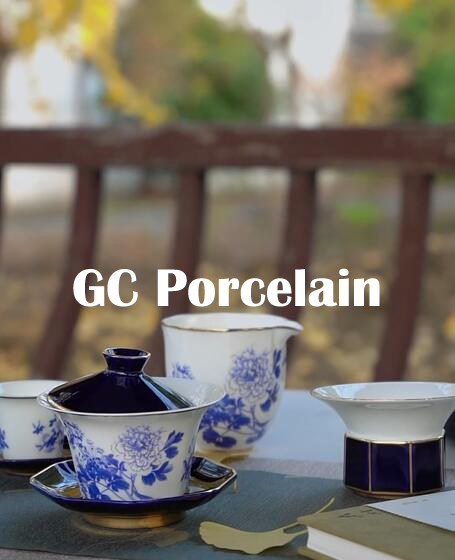
Bamboo and Wooden Tea Sets
Suitable for Brewing: White Tea
Bamboo and wooden tea sets are utensils made by carving natural bamboo and wood. They have a very long history. Before the Tang Dynasty, most of the tea utensils in China, aside from ceramics, were made of bamboo and wood. In Lu Yu's "The Classic of Tea," many of the listed tea utensils are made of bamboo and wood. Bamboo and wooden tea sets have always been popular among tea enthusiasts because the materials are widely available, easy to make, do not contaminate the tea, and are harmless to the human body.
In many tea-growing regions in China, people use bamboo tea sets or wooden bowls to brew tea. They are beautiful and affordable, but their use has become rare in modern times. However, many of the tea scoops and tea ladles used in tea ceremonies today are made of bamboo and wood. These utensils often feature exquisite designs and are skillfully crafted, making them highly artistic and valuable for appreciation. Bamboo-woven tea sets consist of an inner liner and an outer cover. The inner liner is usually a ceramic tea utensil, while the outer cover is made of carefully selected bamboo that has undergone multiple processes such as splitting, scraping, rubbing, and uniforming to create fine, hair-like soft bamboo fibers. These fibers are then colored and dyed, and woven around the ceramic liner to form a cohesive tea set. Such tea sets are not only harmonious in color and elegant in appearance but also protect the inner liner, reducing damage. Additionally, they do not scald the hands after brewing tea and are highly artistic.
Therefore, most people purchase bamboo-woven tea sets not for practical use, but for display and collection.
If you have any questions or need to custom dinnerware service, please contact our Email:info@gcporcelain.com for the most thoughtful support!

